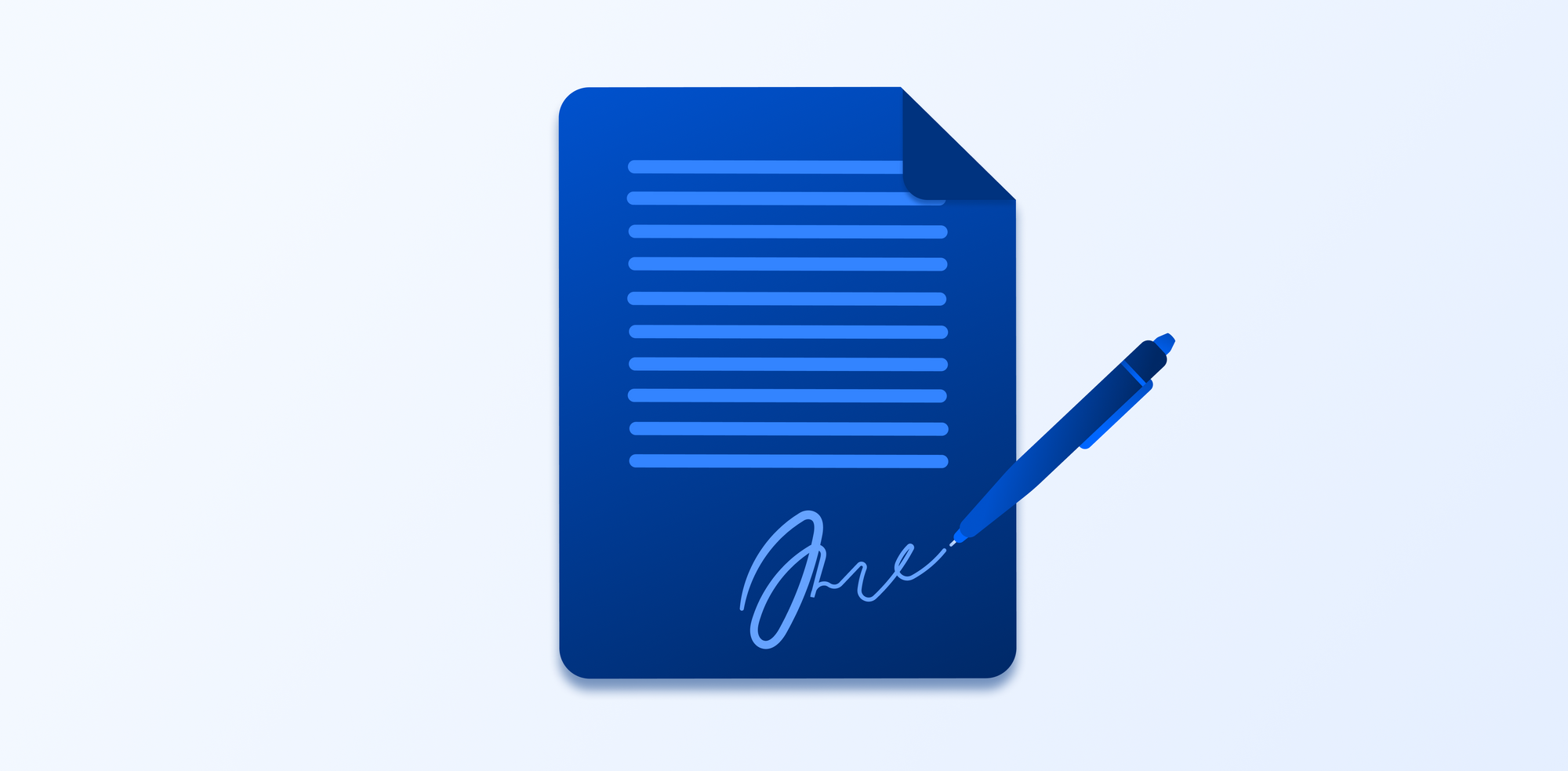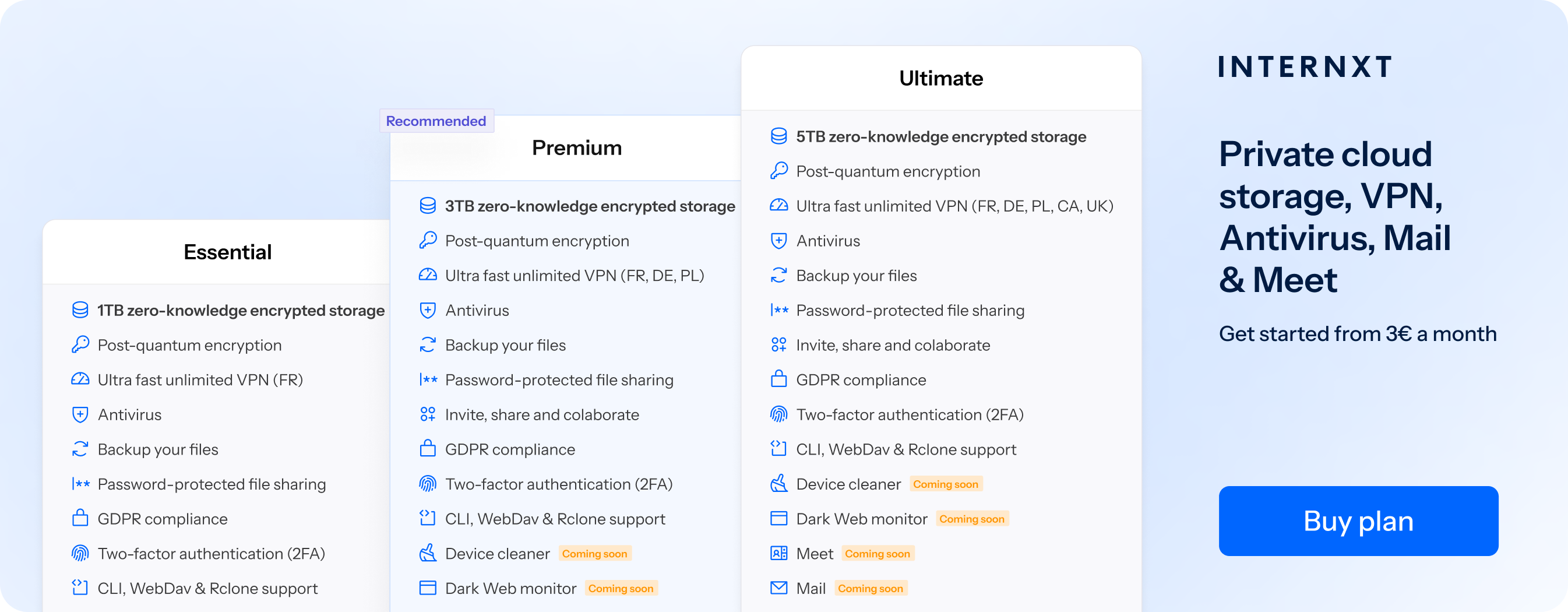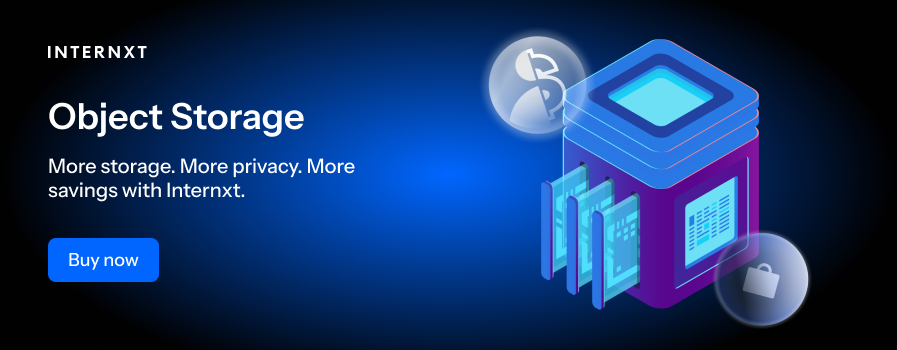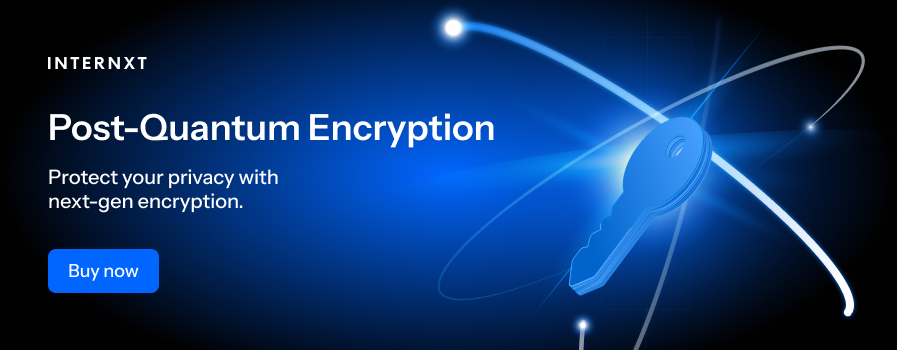What Is A Qualified Electronic Signature and When Do You Need It?

The European Union has many laws and requirements to protect our data online, the most well-recognised being the GDPR.
Aside from that, the EU also has regulations to make signing and verifying sensitive documents easily and securely online by using a qualified electronic signature.
These kinds of signatures are quickly replacing traditional document signing, which is time-consuming and has a higher risk of fraud or document tampering.
If you’re curious about how to get the highest security for your document management using these signatures, keep reading to find out what a QES is, how to get one, and the benefits in the rest of this article.
If you want to combine secure document signing with private shared services, Internxt Drive is a GDPR-compliant and post-quantum encrypted cloud storage and password-protected file sharing for you to securely and privately share documents.
Table of contents
- What is a qualified electronic signature (QES)?
- Benefits of a QES
- QES vs other e-signatures
- Legal requirements of QES
- How do qualified electronic signatures work?
- When to use a QES
- How to get a qualified electronic signature?
- Frequently asked questions
What is a qualified electronic signature (QES)?
A qualified electronic signature, or QES, is the legal equivalent to a handwritten signature and is the most secure e-signature under EU law. It is based on a digital certificate issued by a trusted provider to verify the sender’s identity, and ensures the signature is linked to the signer and can’t be modified after signing.
Qualified electronic signatures became official in July 2016, and were created under the electronic Identification, Authentication and Trust Services (eIDAS) to make digital transactions more trustworthy and with more legal certainty across EU countries.
Benefits of a QES
A qualified electronic signature has numerous benefits. The first and most obvious is that it saves time for two parties who need to agree and sign important contracts quickly, making business processes more quicker and efficient.
From a security and legal standpoint, these kinds of signatures hold the same legal binding as a handwritten signature, and they significantly reduce the risk of fraud, as the private key used to sign a document is protected by a secure device.
It’s also useful for auditing processes, since each signature can verify when, how, and who signed the document, and it cannot be altered in any way.
QES vs other e-signatures
Not all electronic signatures have the same level of security or legal validity, so being aware of these differences will help you choose the right e-signature depending on your needs.

Other electronic signatures include:
- Simple Electronic Signature (SES)
- Advanced Electronic Signature (AES)
- Qualified Electronic Signature (QAS)
These range from basic to advanced security, and you can view a more detailed comparison of QES vs other digital signatures in the table below.
| Type | Security Level | Identity Verification | Legal Acceptance | Typical Use Cases |
|---|---|---|---|---|
| Simple Electronic Signature (SES) | Basic | Low | Varies by country | Non-critical documents, internal approvals |
| Advanced Electronic Signature (AES) | Medium | Medium | Widely accepted | Commercial contracts, HR documents |
| Qualified Electronic Signature (QES) | High | Highest | Equal to handwritten signature in EU | Regulated industries, high-value transactions |
Legal requirements of QES
As qualified electronic signatures operate under the eIDAS regulations, there are clear legal standards that are followed for electronic identification and trust services for online transactions.
Another important note regarding QES is that it carries the same legal weight as a handwritten signature, so it cannot be denied legal admissibility solely because it's in electronic form.
Legal requirements of a qualified electronic signature include:
- Recognised across EU member states
- It must be linked to a qualified digital certificate issued by a trusted EU-recognized certification authority
- Have the necessary technology standards for security and ID verification
- The signer’s identity must be verified by the certification authority before issuing the certificate
- If the signature is to be recognised as legally equivalent to a handwritten one, it must comply with the eIDAS regulation
If your business operates or conducts cross-border transactions within the EU, you must understand the legalities of qualified electronic signatures for both compliance and risk management.
How do qualified electronic signatures work?
Qualified Signature Creation Devices (QSCD)
A Qualified Signature Creation Device (QSCD) creates the signature and protects the key from being copied or misused, making the signature secure and trustworthy. The device stores the signer's key, and only the signer can use it to sign documents.
A QSCD can be physical, such as smart cards or USB tokens, or other secure software solutions.
Qualified certificates
Every QES needs a qualified certificate issued by a Qualified Trust Service Provider (QTSP). The certificate links the signer’s identity to their public key, proving they signed the document and that the signature is legally valid.

The certificate contains information about the signer and is only issued after the signer’s identity goes through a strict ID verification. For extra security and trust, qualified certificates can only be issued by trust service providers who undergo regular audits and are supervised regularly.
Cryptography
A qualified electronic signature relies on cryptography methods to ensure security and trust. Here’s how:
- It uses a public key infrastructure (PKI) to create and verify the signature.
- The private key is kept on the qualified signature creation device, which only the signer can use.
- When the document is signed, the private key creates a unique code for the signature and links it to the document.
- A digital signature is then created, which connects the signer’s identity to their public key to verify their identity and confirm the document has not been changed since it was signed.
- To check the signature, the public key is used to confirm that the signature is real and that the document has not been changed since it was signed.
When to use a QES
A qualified electronic signature has benefits for many industries that need a quick and secure way to verify the signer’s identity.
Legal firms
Court filings, contracts, powers of attorney, and other legal paperwork require strong proof and secure document management and authenticity of the signer’s identity, and that the legal document has not been altered once it’s been signed.
Because a QES is legally equivalent to a handwritten signature, they can be used in many legal proceedings and reduce the risk of fraud or any legal disputes about the signature's authenticity.
Finance
With the rise of digital and mobile banking, banks and other financial institutions must comply with laws and protect their clients’ digital assets.
Qualified electronic signatures are used in account openings, loan agreements, investment contracts, and other financial transactions that require strong identity verification when dealing with large sums of money or the protection of financial data.
Medical records
Due to the amount of sensitive data and the high risk medical industries face from data breaches, using a QES for patient records, prescriptions, and medical consent forms containing sensitive personal and health information.
Using QES will help maintain compliance with bodies such as HIPAA, which aims to protect the data of patients and prevent healthcare data breaches.

Public sector
As the public sector is paperwork-heavy and requires signatures for processes like permits, tax filings, and more, it also requires a legally compliant way to verify the signer’s identity. Using these e-signatures helps speed up the process in the public sector, but also ensures that all processes are legally valid.
Real estate
The real estate business is also a demanding process of legal documents, such as rental agreements, mortgages, sales contracts, and more.
A qualified electronic signature prevents fraud by ensuring all documents signed during the rental or sale of a property are agreed upon by the correct party and cannot be altered in the future.
How to get a qualified electronic signature?
To get a Qualified Electronic Signature, the first thing you must do is check that the service is authorized under the eIDAS Regulation to provide qualified certificates and securely verify your identity, which can be either in-person or via remote video identification.
Before you commit to a provider, ensure they appear on the official EU Trust List. If not, they are not verified to provide you with a qualified certificate.
Once you have chosen your provider, you’ll receive a qualified digital certificate and the signature creation device, either a smart card or USB token, to create your QES.
Once you’re set up, you can sign your documents electronically and ensure your signature meets the legal requirements as a qualified electronic signature in the EU.
Frequently asked questions
What is a qualified electronic signature, and how do you create one?
Qualified electronic signatures are the highest secure method to create a digital signature under EU regulations. It uses a qualified certificate from a verified trust service provider and generates a signature from a secure device.
Are these signatures legally binding outside the EU?
QES is only legally binding within the EU, although other countries have similar concepts for their own electronic signature laws.
Do I need software or hardware to get this signature?
Yes,, you will need a qualified signature creation device, so either a smart card or an authorized software solution that meets the security requirements to create this kind of signature. When you search and choose your provider, they can help you through this process.
Who can issue a qualified certificate?
Qualified certificates can only be issued by Quality Trust Service Providers (QTSPs) that appear on the EU Trust List. These companies are the only ones who can provide a qualified certificate because they are audited regularly and comply with eIDAS requirements.

